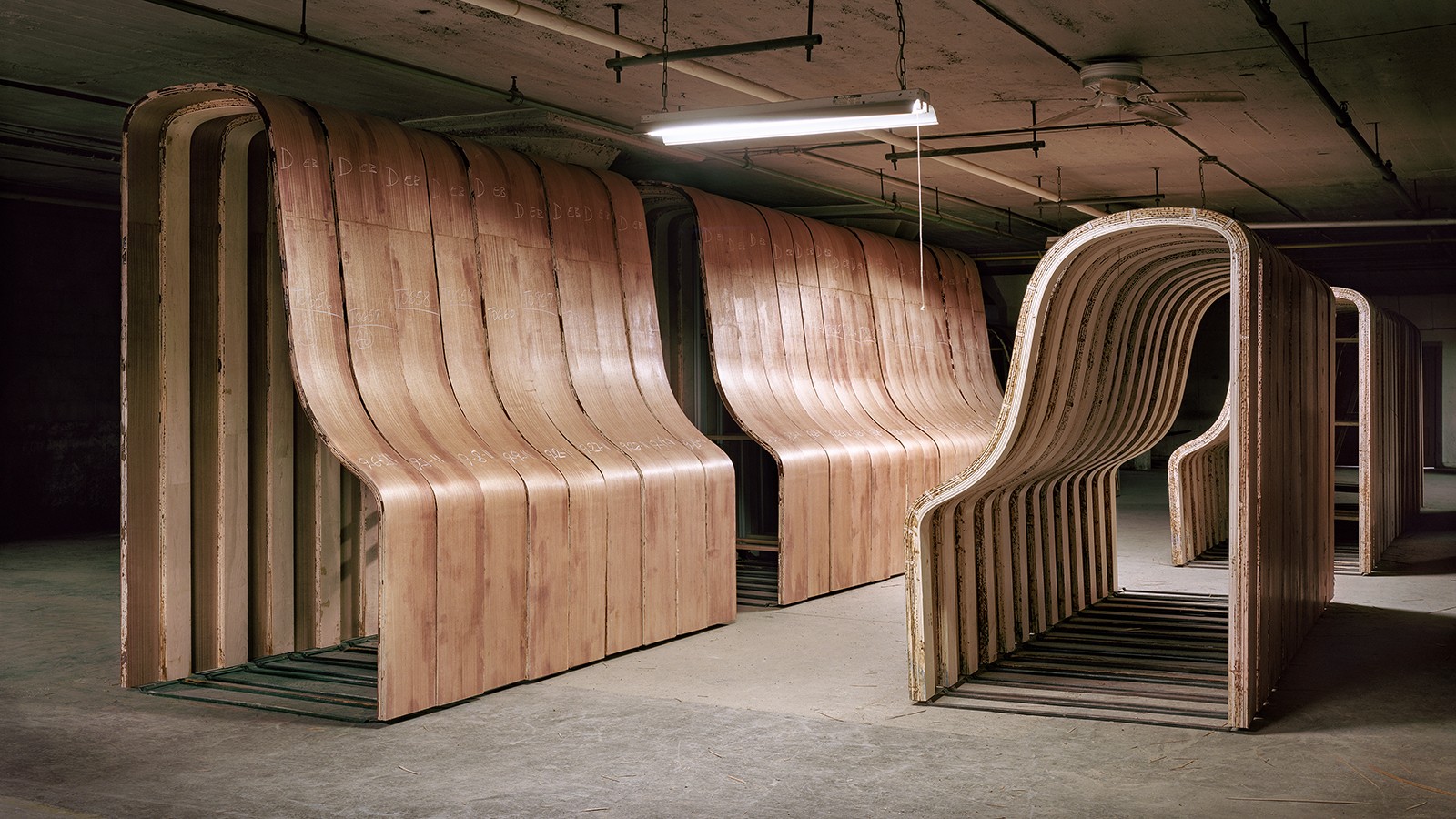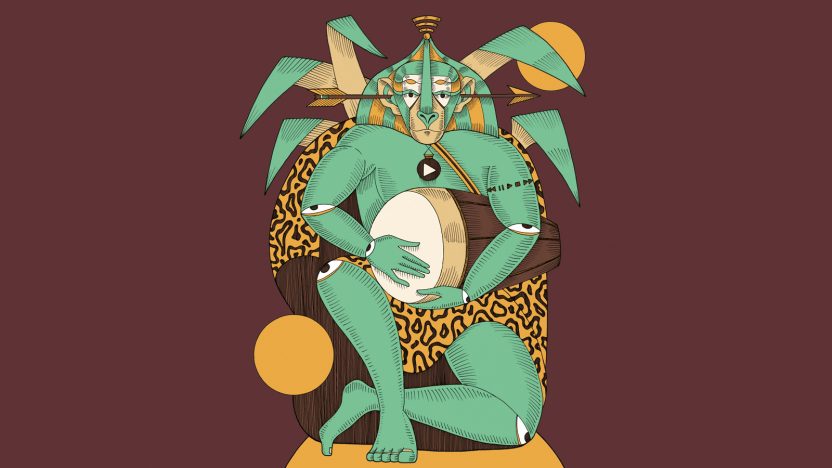On the edge of sound
Music provides an escape from the darkness of our lives, giving us the possibility to transcend time.
by Andrea Dusio

If not for its pull towards a place that does not exist, towards a location that is only reachable by transcending the known, music would be — like other arts (dance, painting, literature) — buried under an eternal return of ideal canons and proportions characterized by an everlasting classicism. Imagine if we were to delete from history the insolence with which Mozart made fun of traditions, injecting the modes of Lutheran canons, made unrecognizable, into his works, or Beethoven’s titanic introversion that transformed folk dances into allegories on nature in his seventh symphony. A little like in Danny Boyle’s film Yesterday — in which the music of The Beatles vanishes completely from people’s memories — we would be deprived of the vertigo of that “outside the box thinking” which represents a leap in its genre and establishes a scale by which to measure everything left at its feet.
We would be forced to endure an infinite repetition of staid sequences, Haydn’s frigid symphonies, and we would have to make do with chamber music commissioned by amateur princelings, inured to their labored performances. Perhaps we would be allowed the modest romantic-pastoral temptations of Weber’s operas. We would have Oberon, Euryanthe, and The Freeshooter, but no one would have thought they could combine Freemasonry and natural-law, mysteriosophy, fairy stories, invocations of Egyptian deities, and Enlightenment into a single opera as in the improbable cathedral of The Magic Flute. Like Werner Herzog’s film Fitzcarraldo in which he tries to build an opera house in the Peruvian jungle, and takes a ship to the top of a mountain, in the same way Ernst Bloch’s The Spirit of Utopia records the decisive moments in music history. A history characterized less by the progression of technical and formal acquisitions than by the ideas of certain musicians who have used music to take man away from the darkness of the moment lived, giving people a possibility to transcend their time.
It was intuition that pushed Schubert to compose Winterreise, when in 1823 he came across the poems published by Wilhelm Müller in the Prussian almanac Urania. Müller was a poet who had been ignored by critics, a librarian in the military stationed in Dessau regarded with suspicion by authorities because of a number of articles praising Byron. However, in those lines, Schubert glimpsed the possibility of creating a cycle on the significance of existence. Then, leaving behind the fragmentation of the lieder, he gave shape to the story of the nighttime winter journey of a spurned lover. A lover forced to wander over the symbolic itinerary of a nature that has been transformed by romantic sensitivity. Winterreise is a complete opera. Far from Wagner’s gargantuan productions, it was composed simply on the pianoforte. Instead of constraining himself to accompany the song — as was traditional with the lied — Schubert developed the voice of this mysterious unsettled character forced to walk along snowy roads, whipped by the wind and with no hope of being able to return to the home where he was loved.

In this case, it isn’t even a question of leaving a genre behind. Winterreise occupies a special place on the shelves of classical music, but it is intimately related to In the Wee Small Hours by Frank Sinatra, Rain Dogs by Tom Waits, and The Boatman’s Call by Nick Cave. The backdrop of night and winter amplify emotions, the pianoforte becomes the tempest, the water that continues to flow beneath the ice, the melody heard from afar, like the voice of memory, a little organ, the dialogue whose words do not melt into birdsong, the ungainly cawing of crows. It was Mahler with Das Lied Von Der Erde who fused the song of the lied with the symphonic form, but Schubert went beyond this, composing a symphonic poem that explored with pianoforte a range of expression which would otherwise have remained restricted by traditional compositional forms.
Miles Davis described John Coltrane’s style in a 1958 interview with The Jazz Review: “He is dedicated to those arpeggios, and then he plays chords that have other chords inside them, and he plays them in 50 different ways, and he plays them all at the same time.” Ten years later, listening to the Thelonius Monk Quartet play at the Five Spot, jazz historian Ira Gitler coined the expression “sheet of sound.” Coltrane’s compositions were curtains of sound, sheets of notes played quickly in a continuous glissando, indistinguishable from each other. Coltrane would visit Monk in the mornings to rehearse pieces, discuss music, and look for new ways forward. Coltrane was said to be an omnivorous reader, spending his days immersed in obscure texts about the history of religions, oriental mysticism, and astrology. It is said that he did not speak much, loved math, and applied a mathematical approach to every part of music. When he played, though, he was extremely passionate, and when his comet shot into the sky for the first time, the critics placed him with those saxophonists who brought anger to the blues, with an intensity unknown until that moment, enriched by a strong funky influence, as can be heard in one of his best-known compositions, Blue Train.
Monk pushed Coltrane to coax more than one sound from his sax at the same time by using harmonics. Revisiting the rhythm and blues of his youth, Coltrane squeezed whistles from his instrument, authentic screams that became trumpeting in the most confused moments of his labyrinthine and obsessive solos, in which he pulled out everything a theme had to offer. Studying Indian music and listening to Ravi Shankar led him to think in terms of chords instead of scales. He redefined the codified system of tonal music, through modal improvisation, and he explored the secret rules of the world of sounds. Perhaps his problems with drugs and his marriage also played a role. In 1964 Coltrane crossed the ford, breaking with jazz traditions in favor of a cosmic music with substantial harmonic stasis based on a pair of chords, sometimes even without written music. Mysticism became his way of finding an answer to the Afro-American problem, transcended through musical expression.

Crescent, A Love Supreme, and Ascension are all pieces from 1964/1965 in which Coltrane learns to resolve tension and distension, anger and love, prayer and shouting. The form of the four-part suite is still recognizable in A Love Supreme, even though it was remodeled as a song to praise God. Here, we have the first synthesis of an idea to include ethnic instruments and tracks in jazz in which a greater role is given to rhythm, alongside a simplification of the harmonic line: fewer chords, a constant beat, not playing rigidly, making interplay rather than quarters important. Ascension is complete improvisation, as was Free Jazz by Ornette Coleman. Each member plays their solo and the bridges are left to sporadic predefined passages, like interchanges on a railway network, only episodically tonal. The result is an abstract tapestry, polyphonic and cacophonous, where a brief moment of melody surfaces before everything goes back to total chaos. Nothing is the same as in the world we used to know, nothing looks like a place, in the territory of utopia.



 in Italy
in Italy